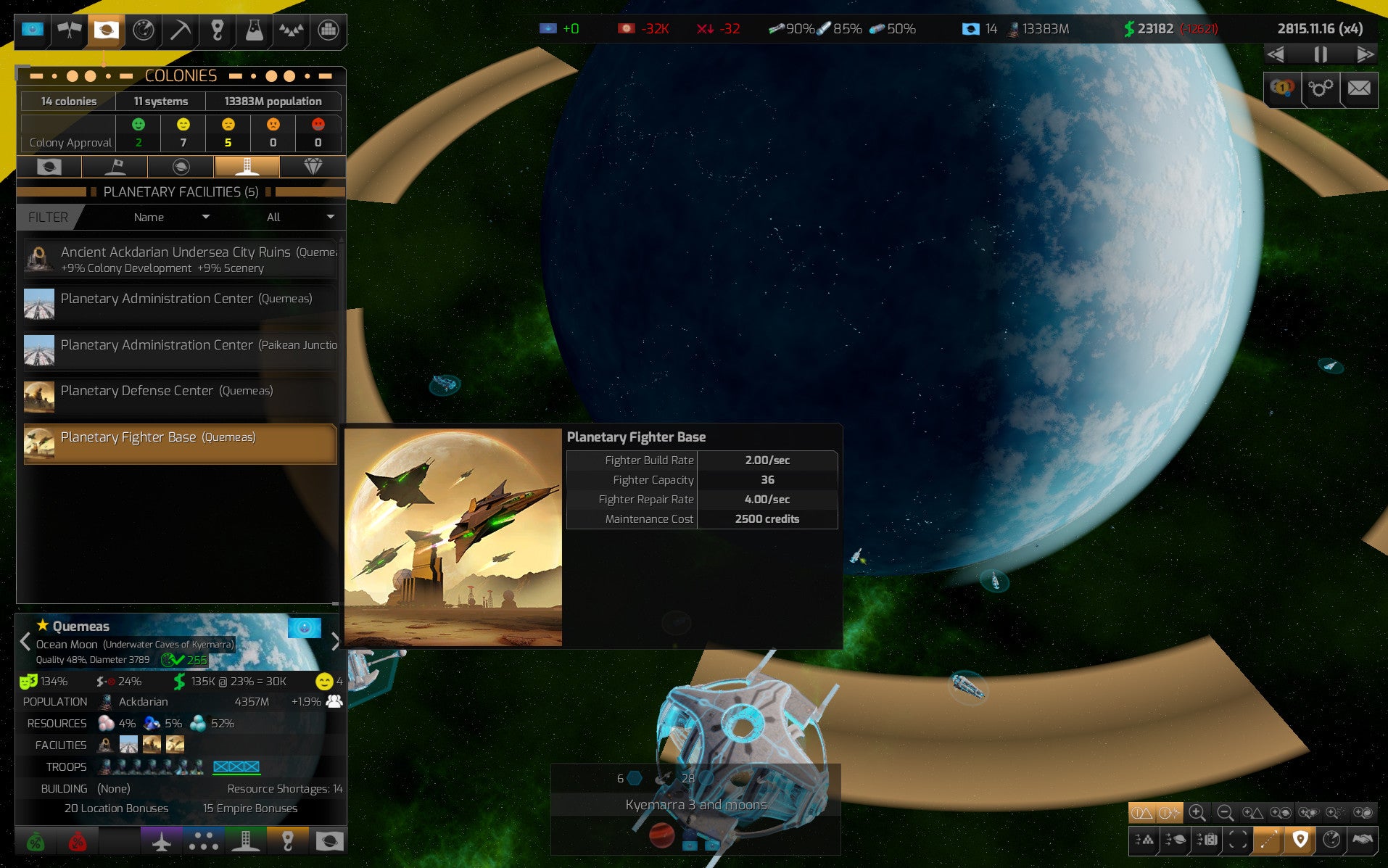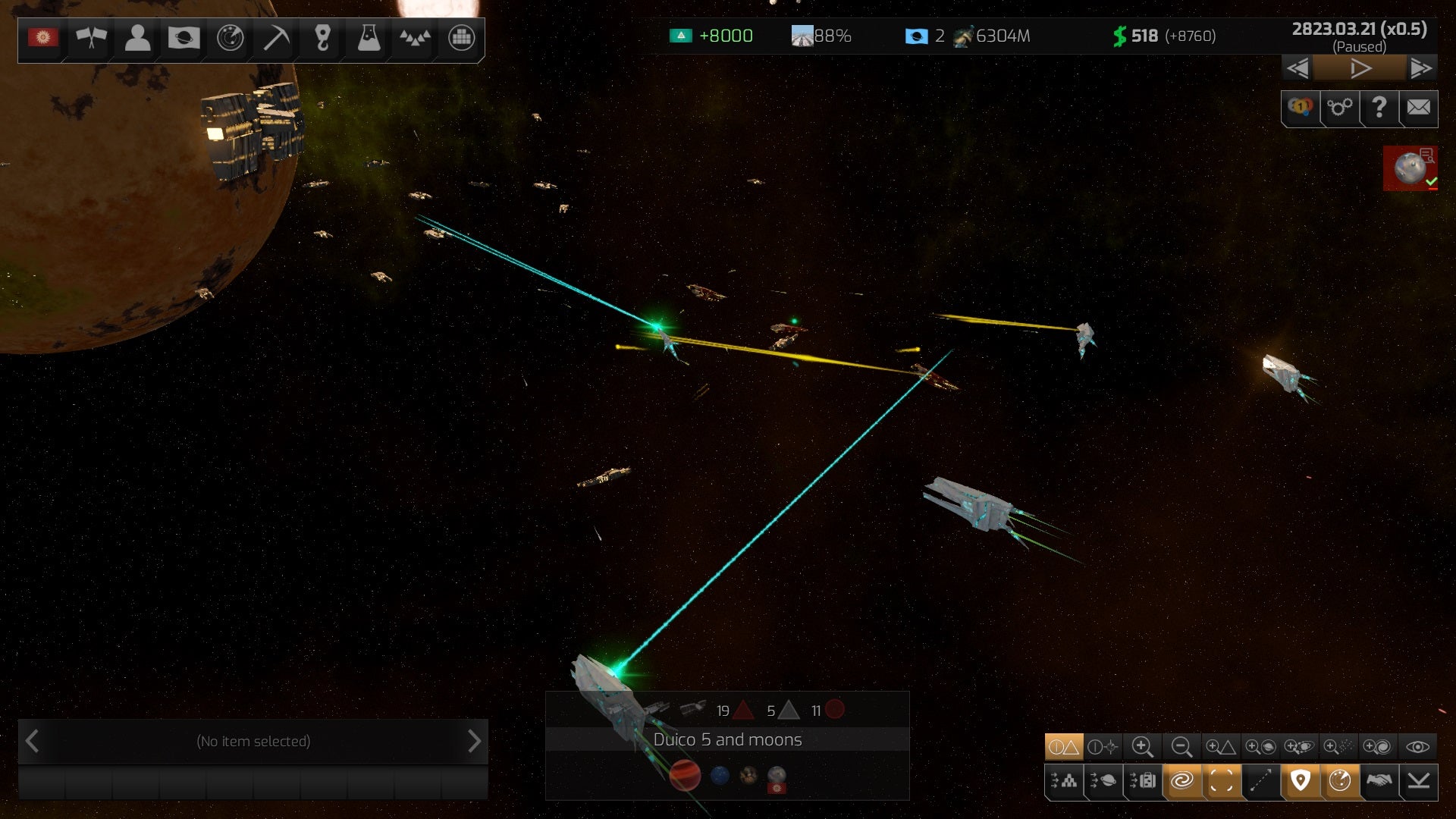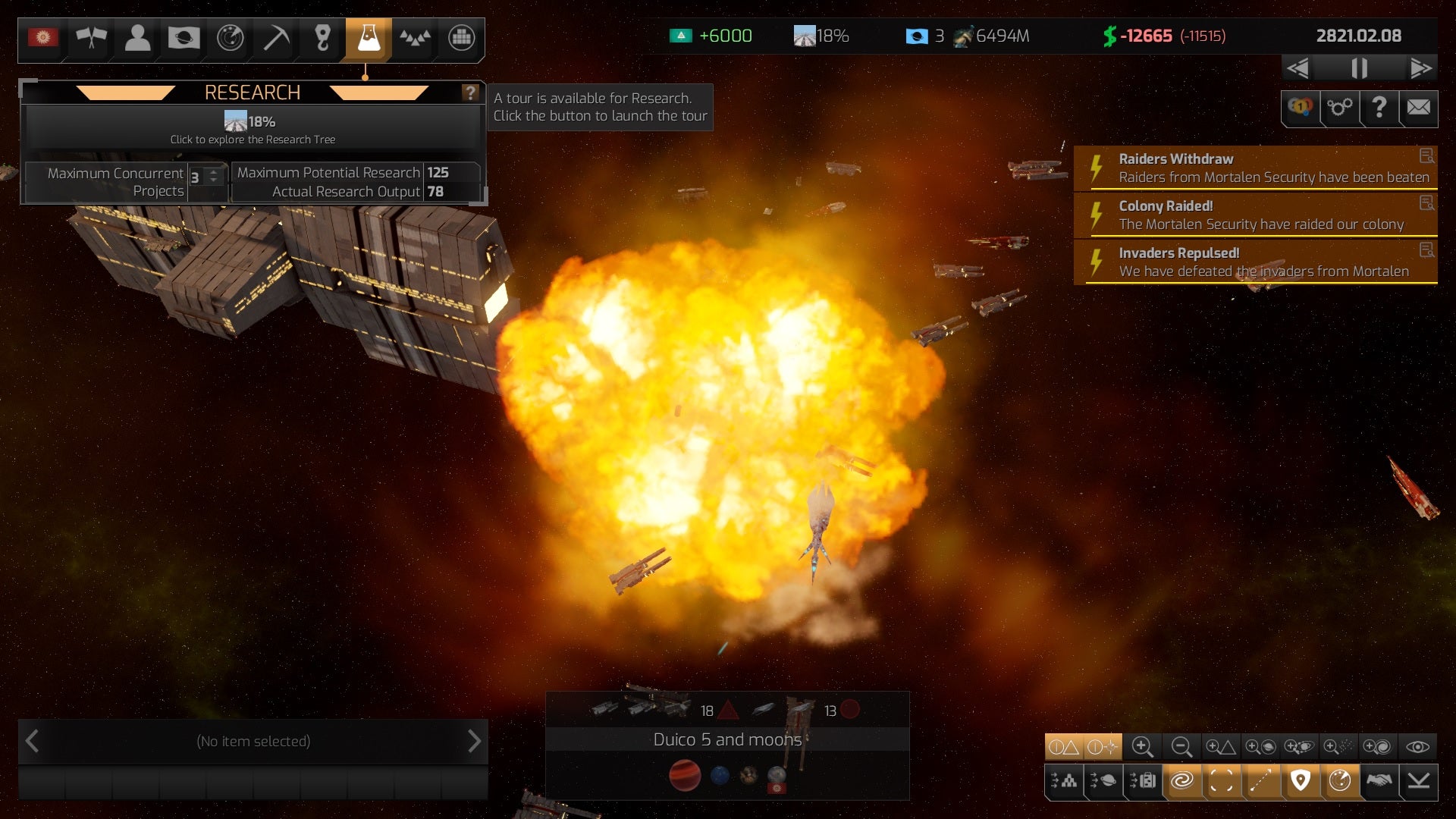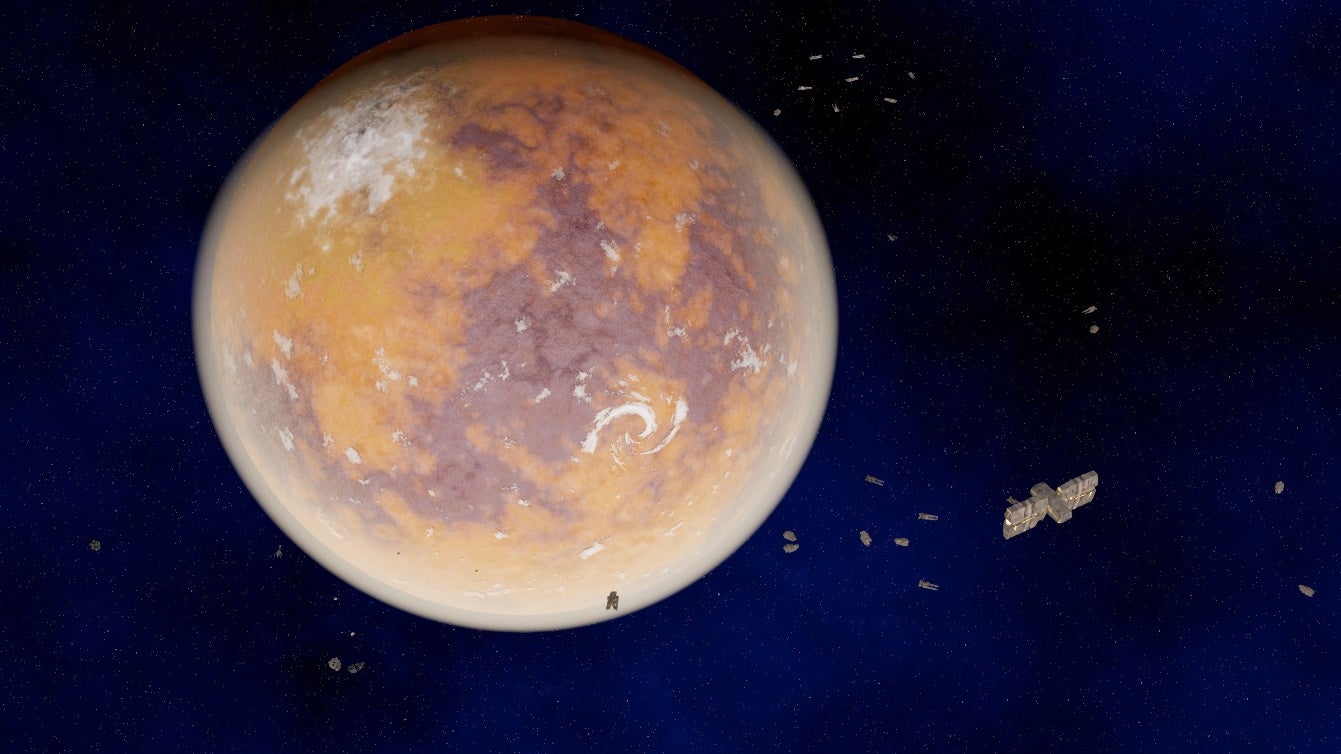Code Force have since sent us a preview build, and I’ve been consumed with it for the better part of a week. I’m struggling to gauge exactly how much to reserve, because it’s had me positively cackling at my minor successes and howling in enjoyable despair at my setbacks. If they can do, ooh, two thirds of what I’m hoping in the six weeks before its release on March 10th, this could be every bit as brilliant as its predecessor, with fewer flaws. Most immediately obvious is Distant World 2’s dramatically better performance. The assurances we got during their Q&A demonstration the other week were clearly true. Aside from an occasional brief pause, everything you ask happens instantaneously, and loading times are excellent (and this while running from an HDD, too). The new UI will take a little while to become familiar, but it’s laid out logically and unobtrusively. Most actions are simple to carry out. Even if that’s all that was on offer, simply removing so many of the obstacles DWU put between your intentions and your outcomes would already be a huge improvement. Ship and fleet orders, for one, were previously spread over multiple disparate menus and led to utterly maddening behaviour. It’s now far easier to keep fleets doing what you want without babysitting, or to maintain manual control without them overruling you. There is still room for improvement, mostly in clarifying some terms and rearranging information. Even an experienced player will trip over some of the automation quirks, most of which are too esoteric to get into here, not least as there’s still potential for the majority of these issues to be corrected before release. As promised, though, the ship designer process is improved, although ships are still restricted by classes somewhat. It gets a bit confused and results are inconsistent if you try to combine civilian and military roles, although this, to be fair, contradicts one of the game’s core design concepts. In any case, the process is a hell of a lot less laborious, and its automatic designs and upgrades are generally suitable enough for broad purposes that you can remain hands off if you prefer, of take advantage of the reams of technical data available to you if you’re a big optimiser. The biggest change here is the new hull system. Each hull type now also has fixed mounts, and while it doesn’t affect the fundamental rhythms of a battle, it does have a significant impact on weapon firing arcs. Fights against bases in particular still tend to end up with ships just lining up around it and firing until someone dies or retreats, but it does differentiate ships by more than just size, allowing for occasional surprises like a pirate sitting in a static base’s blind spot. It also adds new research options for more specialised hulls within a given class. The fixed weapon hardpoints also add practical significance to the new 3D graphics. Distant Worlds 2 is a lot easier on the eyes, with each faction having distinct ships. You can see them visibly enter starports to dock for repairs, and they’ll also send shuttles down to planets or ship debris. There’s more bustle, but crucially avoids becoming a mess of overlapping sprites and ships inexplicably circling out of their own attack range. Non-combat ships can more reliably be automated too, with multiple modes for explorers and builders. The latter have a dedicated salvage mode, a new feature that supplements the recovery of disabled or wrecked, but still intact ships. It makes me feel less reluctant to blow up a ship I could board instead. Debris isn’t always profitable, but I’ve made cash from it, and when you capture a station that uses tech more advanced than your own, you might get lucky and research it while patching it up. I do wish there was an option to modify existing ships and stations without just reverting them to a blueprint, though. You can’t, say, convert an advanced starport you captured into a simple defensive base unless you create a design with those guns attached, which you can’t do unless you’ve researched said guns. It’s the limitations of the shipbuilder again, basically. It’s not devastating, but the familiar adherence to blueprints feels like a missed opportunity to fit a more bespoke option in. Manually adjustable stock levels help here, though, to keep your civvies from emptying your coffers trying to fill every backwater port with unnecessary supplies. Salvage is also a source of prisoners. Any character who survives a wreck or boarding attack is one you can attempt to hire, execute, or release or trade back to their bosses. The character system works much like it did in DWU, but they’re not as scarce. They’re still on the flat side when compared to rich RPG-heavy sims like Crusader Kings 3 or the obscure nonlinear dynamics of Shadow Empire. But you’ll probably find a superstar of some kind, be it a spy or general, or my entire team of highly skilled researchers who are as troublesome as they are useful because they’re all unbelievably corrupt. Distant Worlds 2 includes a few features from the original game’s expansions, with the pre-warp start in particular making a welcome return. It’s a short phase, but the early game in general feels considerably longer. This could be changed with the right startup settings, but I’m all for a longer early game in any 4X, especially one with such a huge focus on exploring and building logistical and economic networks. Pirates are back too, and though they’re not as complex as they once were, they’re also less miserable to deal with. No longer does every pirate you pay off send a fleet to parasitise your helpless colony; instead, they do as promised and leave you alone. Their payments are more manageable, and their attacks less overwhelming. They have quite a knack for finding the right window to send a couple of raiders in fact, rather than dropping their entire fleet to cripple your empire. Diplomacy has been expanded with more treaty options and those first contact scenarios. I’m told the AI is a top priority for finishing touches, so I’ll hold my complaints for now. The framework is there and the dynamics seem to be working even where the details and balance are a little off. Indeed, an intriguing new feature adds multiple research levels to improve diplomatic channels on a per-species basis; to begin with you can only broker the most primitive deals until you research your new neighbour’s language. This opens up more options and slightly bumps their opinion of you, and pursuing more research into their culture, history, and so on will continue that trend. Even as a war-focused race like the Mortalen, I found myself hastily pivoting to some diplomatic research to improve relations with a worryingly powerful empire one of my traders encountered, in the hope of forestalling future problems. The single research tree is split into a dozen fields, each of which can be boosted independently by the right characters, locations, factions, and government types, though I still enjoy reverse-engineering hijacked ships most of all for that X-COM feel. The larger galaxies have some interesting effects with a lot of these factors, stretching out the exploration periods and putting major powers much further apart, so they have time to lean into their personalities before clashes start. Nebulae are now not just gas clouds but active hazards, and warp drives now have to carry out multiple jumps, requiring you to chart courses. The result is a stronger sense of the geography that space games often lack. At one point I had a solitary civilian trader, who’d discovered a chain of independent colonies, with an outlying starport of another empire at the other end. Through them I made diplomatic contact and even sent some spies and ambassadors, and would periodically hear a warning that they were being threatened by pirates or space monsters in between whatever private adventures they were having at the other end of the galaxy, totally without my input. It feels alive, a thing to be managed rather than completely controlled. I do have complaints. It’s inevitable that some will remain come the full release, and perhaps even after a patch or two. The biggest is really a collection of small details, little inefficiencies and confusions that remain despite the big improvements in UI and data management. The main cashflow display is still very unhelpful, as so much income is irregular that the constant display of your net income/outgoings has no apparent bearing on your balance. The help texts and encyclopedias are better but finances in particular will confuse a lot of players, and could use further explanation and breakdowns. Although it’s easier to find the dozens of resources, our build had no easy way to find what they’re used for, what exactly you’re importing/exporting, or how much you’re trading with a given faction and thus whether you can afford to cross them. The notification system needs an “ask me again in ten years” option, and desperately needs a “never waste my time with this again” one. A lot of these are things Code Force have already said they’re working on, so while I can’t ignore them entirely, I also can’t hold them against the game at this stage. If we’re to imagine the worst case scenario, it’d be the full version making no changes at all, in which case it would get a hard time but still be a dramatic improvement on Distant Worlds Universe. Very little has been lost, little has fundamentally changed, but almost everything works better. That’s a strong baseline, and I am frankly alarmed at the thought of how much of this year I’ll likely spend playing Distant Worlds 2.






